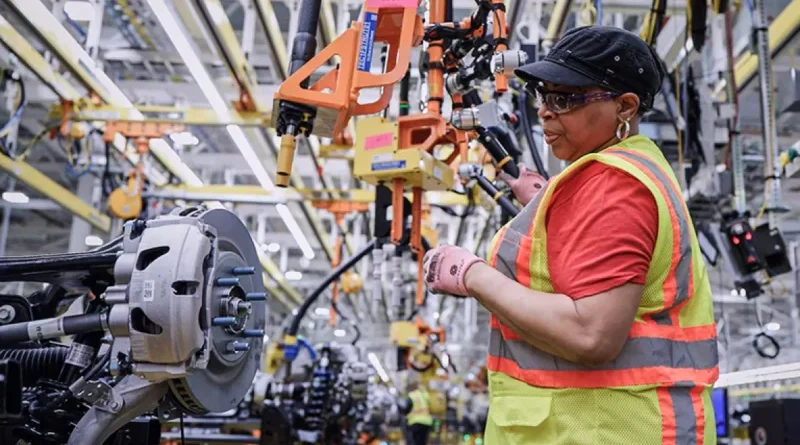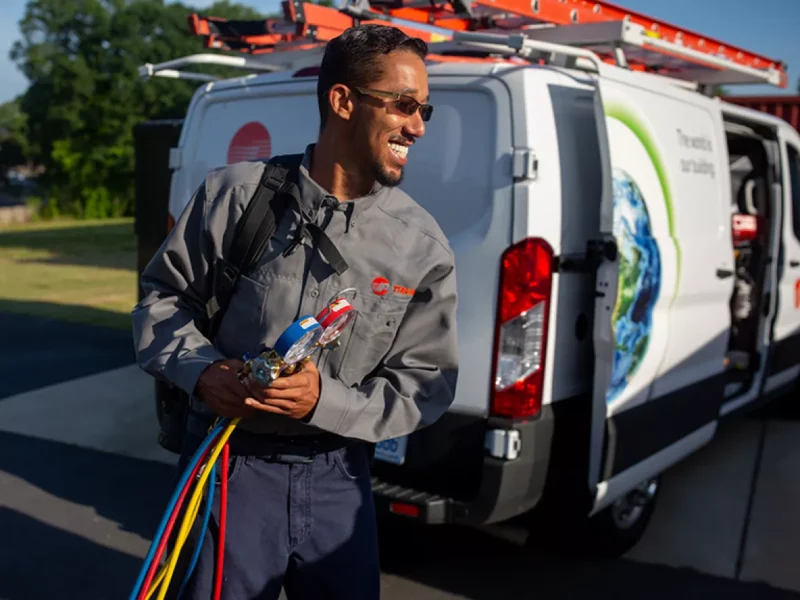Jobs
The Newest U.S. Energy Jobs Report Says This About The Clean Energy Economy – CleanTechnica

Sign up for daily news updates from CleanTechnica on email. Or follow us on Google News!
Market forces and government incentives are creating a growing number of renewable energy jobs.
Workers riveting solar panels to roofs, keeping wind turbines spinning, and weatherizing homes across the nation are part of a job market that’s been outpacing U.S. employment growth overall. Renewable energy jobs now comprise more than 40 percent of the country’s 8.35 million people employed in the energy industry, according to the U.S. Department of Energy’s (DOE) annual U.S. Energy and Employment Report (USEER) published in September. Private clean energy companies, governments, and nonprofits added 250,000 jobs in the energy industry in 2023, more than half of them in renewable energy.
These green jobs that help the nation transition away from fossil fuels are key to helping the country reach net zero carbon emissions by 2050, a goal scientists say is critical to avoiding the most significant consequences of climate change. “Last year, we experienced one of the highest growths in clean energy jobs history,” says Michael Timberlake, communications director for E2, an NRDC affiliate focused on business policies that support both our environment and the economy. “It is ranked as one of the highest single years of total job growth since we started tracking it in 2015.”
3.5 million
The approximate number of clean energy workers at the start of 2024
200%
The rate that clean energy jobs grew in 2023, compared to job growth economy-wide
Though the energy industry is still adding jobs in fossil fuels, positions in solar and wind project development are climbing at a faster rate. Jobs focused on modernizing the grid and shuttling energy from one place to another are part of that growth. And because the renewable energy economy relies heavily on the construction and utilities fields, it beckons more types of workers as projects proliferate. “We’re talking about scientists, engineers, sales professionals, installers, and electricians,” says Shrayas Jatkar, senior advisor for Good Jobs & Workforce Development at the DOE.
The same trend holds up around the globe, where more than 13 million people now work in renewable energy, the International Renewable Energy Agency reports. Universities worldwide now offer more related degrees—such as electrical engineering with an emphasis on electrical power—helping to prepare students for careers in the field. Given predictions that this growth will only continue, experts say these types of educational shifts must pick up.
Policies supercharge the renewables market
The number of renewable energy jobs were growing until COVID-19 disrupted the job market. The recent numbers demonstrate that not only has the sector recovered, but that it’s surging. For every 100 jobs, more than 6 jobs are now in clean energy.
The Bipartisan Infrastructure Law (BIL) and the Inflation Reduction Act (IRA), two federal laws that incentivize companies to develop renewable projects that boost employment opportunities, will help bump up that number in the coming years.
Last year’s DOE report came out not long after Congress passed the IRA, so it didn’t include much data on the law’s effect. This year’s, however, has “a lot more information on the impact the IRA and the BIL are having on clean energy,” says Timberlake, who also authored an analysis of the data in a new E2 report: Clean Jobs America 2024. “But I think the market winds were already shifting. Solar has been getting cheaper for years. Wind energy has been getting cheaper for years. It is easier to install these things, it is more palatable for companies to invest, and they know that clean energy is this massive commercial opportunity that they cannot pass up.”
So far, those laws have resulted in companies announcing more than 330 large-scale renewable energy and electric vehicle (EV) projects in 40 states, according to E2. As the projects get off the ground, they will together employ tens of thousands more workers.

Building the clean energy workforce
To prepare people for those positions and many others, the DOE sponsors a number of fellowship and internship programs that give people experience working with utilities, state energy offices, and energy co-ops. The agency’s Clean Energy Innovator Fellowship, for example, gives participants an opportunity to work for up to two years on projects at select host organizations that advance decarbonization in the energy and transportation sectors. Launched in 2017 as a program focused specifically on solar, it has since expanded to other technologies.
For the climate career curious, the DOE also publishes interactive job maps to help people chart their path in a range of professional categories. Job seekers can scroll through opportunities in areas like clean energy manufacturing, bioenergy, and hydrogen and fuel cells. The tools show how someone who begins a career in green buildings as a maintenance technician could later become a multifamily energy auditor, then gain skills to land a job as an energy efficiency program director or facilities manager.
“In order to seize the economic opportunity of this energy transition, we’re trying to think systematically in how we train people for work and a career as opposed to niche training in clean energy of the day,” Jatkar says.
Where the jobs are
The DOE’s energy jobs report breaks professions down by technology categories. Each one has grown incrementally each year, including fossil fuels.
Solar & wind energy
]Generating electric power requires professionals who work in construction; production and manufacturing; maintenance of utilities and infrastructure; and business services. Solar jobs and wind energy development account for most of the positions in this power generation category. According to U.S. News and World Reports, wind turbine technicians made a median annual wage of nearly $57,000 a year in 2022. Solar panel installers made more than $45,000. (The U.S. Bureau of Labor Statistics analyzes how those job categories will grow; the agency updated its most recent 10-year projection in 2020.)
Transmission, distribution & storage
Battery storage, smart grid technologies, clean fuels storage, and electric vehicle charging all fall within this category. EV charging alone increased by 25 percent in 2023 to nearly 2,800 jobs, with workers responsible for everything from building charging stations to maintaining software and making repairs. The International Council on Clean Transportation estimates that the industry’s growth will result in 160,000 more jobs in the United States by 2032. Construction jobs are the most prevalent within this technology sector, and most of those are in grid modernization.
Work in battery storage is also growing significantly, as the industry scales up research and development to meet the needs of both the burgeoning EV sector and our evolving grid. The USEER report explains that a person with one job in battery storage can work across industries. Both construction and utilities, for example, employ workers who can perform installations and repairs.
Energy efficiency
Jobs in the production, trade, installation, and repair of products and services that increase energy efficiency fall into this category, including contractors who specialize in Energy Star certified appliances, efficient heating, ventilation, and cooling (HVAC) products like heat pumps, as well as work on recycled building materials. Many people in this field are weatherization specialists concentrating on multifamily housing upgrades that help reduce energy bills for low-income households. Companies focused on energy efficiency added more jobs than any other technology, and most of those jobs are in construction. HVAC mechanics and installers received a median pay of $57,300 a year in 2023.
Clean cars & trucks
Companies offering jobs in this category manufacture, ship, design, and repair clean vehicles—which encompass hybrid EVs, plug-in hybrids, and hydrogen/fuel-cell vehicles, in addition to EVs. There’s been a surge of job opportunities in EVs alone, from design and development to battery manufacturing to charging network development and maintenance. And the battery electric vehicle sector’s rate of growth, compared to the growth of jobs in diesel and gas powered vehicles, is eye opening—12.9 percent compared to 2 percent, respectively.

By Susan Cosie. Courtesy of NRDC.org
Have a tip for CleanTechnica? Want to advertise? Want to suggest a guest for our CleanTech Talk podcast? Contact us here.
Latest CleanTechnica.TV Videos
CleanTechnica uses affiliate links. See our policy here.
CleanTechnica’s Comment Policy









.jpg)

